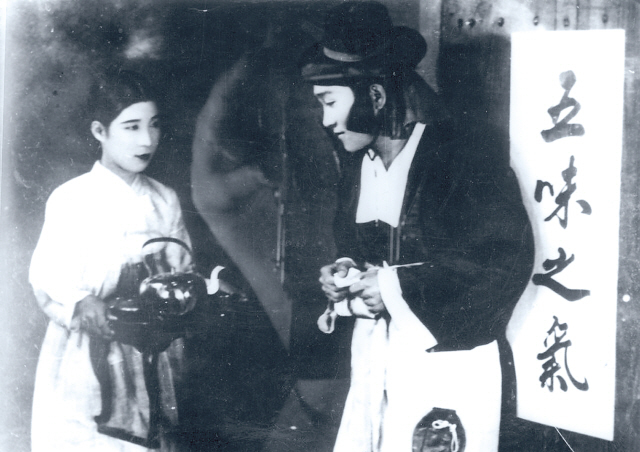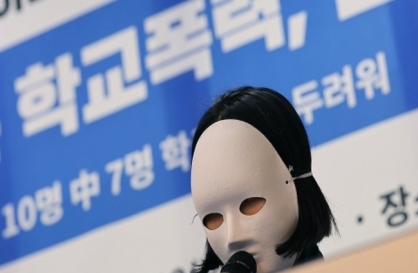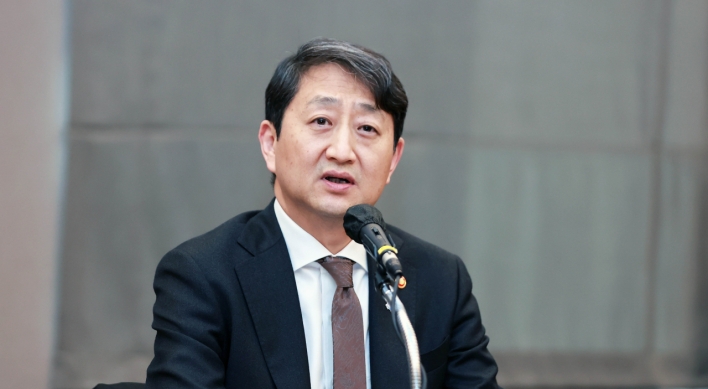Latest volume in a series on Korean culture explores the country’s rich filmmaking history
Korea’s Culture Ministry published an English-language book about Korean cinema and its industry, as the newest addition to its “K-series,” a book series featuring Korean culture.
The book, titled “K-Movie: The World’s Spotlight on Korean Film,” features Korea’s film industry today, relationship between hallyu and Korean films, prominent directors and actors, as well as notable film festivals held in the country.
“Korean films enjoyed a 52 percent share of the domestic market in 2011, putting them over the 50 percent mark for the first time in four years,” the book says in its first chapter, emphasizing the achievement of Korean cinema in recent years.
It also notes 2011 as the most prolific year for Korean filmmaking with 216 new movies.
The book’s “acclaimed directors” section features “Oldboy” and “Sympathy for Lady Vengeance” Park Chan-wook, “The Day He Arrives” and “In Another Country” director Hong Sang-soo, “Pieta” director Kim Ki-duk and “Oasis” and “Poetry” director Lee Chang-dong.
The book also dedicates two pages to other notable directors, including “The Thieves” director Choi Dong-hoon, “The Taste of Money” director Im Sang-soo and “The Helpless” director Byun Young-joo. Readers can also find out about Korea’s up-and-coming directors, including “The King of Pigs” director Yeun Sang-ho and “The Bleak Night” director Yoon Seong-hyeon.
In its “K-Movie Stars” section, readers can learn about the nation’s top actors and actresses, including Song Kang-ho, Jeon Do-yeon, Sul Kyoung-gu and Lee Byung-hun.
Korea’s Culture Ministry published an English-language book about Korean cinema and its industry, as the newest addition to its “K-series,” a book series featuring Korean culture.
The book, titled “K-Movie: The World’s Spotlight on Korean Film,” features Korea’s film industry today, relationship between hallyu and Korean films, prominent directors and actors, as well as notable film festivals held in the country.
“Korean films enjoyed a 52 percent share of the domestic market in 2011, putting them over the 50 percent mark for the first time in four years,” the book says in its first chapter, emphasizing the achievement of Korean cinema in recent years.
It also notes 2011 as the most prolific year for Korean filmmaking with 216 new movies.
The book’s “acclaimed directors” section features “Oldboy” and “Sympathy for Lady Vengeance” Park Chan-wook, “The Day He Arrives” and “In Another Country” director Hong Sang-soo, “Pieta” director Kim Ki-duk and “Oasis” and “Poetry” director Lee Chang-dong.
The book also dedicates two pages to other notable directors, including “The Thieves” director Choi Dong-hoon, “The Taste of Money” director Im Sang-soo and “The Helpless” director Byun Young-joo. Readers can also find out about Korea’s up-and-coming directors, including “The King of Pigs” director Yeun Sang-ho and “The Bleak Night” director Yoon Seong-hyeon.
In its “K-Movie Stars” section, readers can learn about the nation’s top actors and actresses, including Song Kang-ho, Jeon Do-yeon, Sul Kyoung-gu and Lee Byung-hun.

Those who are interested in the history of the Korean cinema will find the book’s third chapter useful. From the 1920s to the present, the book chronicles how Korean films developed over the past century. The featured films include director Na Un-kyoo’s 1926 silent film “Arirang,” Korea’s first talkie “Story of Chun-hyang” (1935) and borderline porn films, such as “Madam Aema” from the 1980s.
The book also offers an overview on Korean films that have been remade by Hollywood. Local director Kim Ji-woon’s 2003 horror “A Tale of Two Sisters” was made into an American remake titled “The Uninvited” in 2009, while director Lee Hyun-seung’s 2000 romance “Il Mare,” starring Gianna Jun (Jun Ji-hyun) and Lee Jung-jae, was remade by Warner Brothers in 2006 as “The Lake House” starring Sandra Bullock and Keanu Reeves.
Readers can also learn more about film festivals in Korea, including the Busan International Film Festival (BIFF), Jeonju International Film Festival (JIFF) and Puchon International Fantastic Film Festival (PIFAN) in the last chapter.
This book was written in Korean first by local film critic Kim Kyung-tae and translated into English by Colin Mouat.
By Claire Lee (dyc@heraldcorp.com)



![[AtoZ Korean Mind] Does your job define who you are? Should it?](http://res.heraldm.com/phpwas/restmb_idxmake.php?idx=644&simg=/content/image/2024/05/06/20240506050099_0.jpg&u=)














![[K-pop's dilemma] Is Hybe-Ador conflict a case of growing pains?](http://res.heraldm.com/phpwas/restmb_idxmake.php?idx=642&simg=/content/image/2024/05/07/20240507050746_0.jpg&u=)